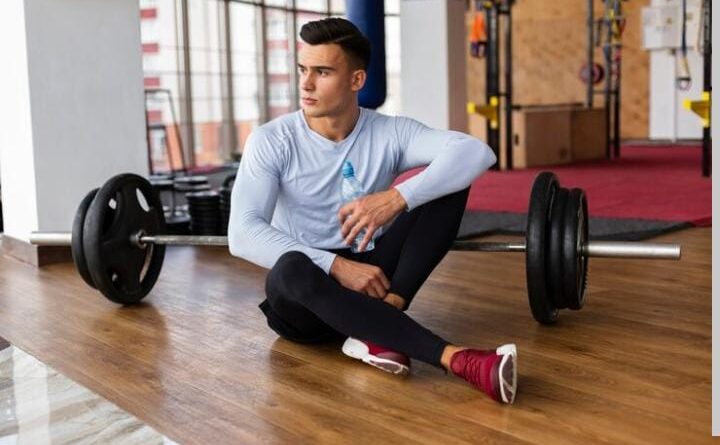Seated Calf Raise – The Ultimate Guide to Strong and Sculpted Calves
Introduction
When it comes to leg workouts, most people focus on squats or lunges and forget one of the most crucial muscles — the calves. The seated calf raise is a powerful exercise that targets your soleus muscle, helping you build strength, balance, and impressive lower legs.
Unlike standing calf raises, the seated version isolates your calves and gives them the burn they deserve. Whether you’re a fitness beginner or a pro athlete, mastering the seated calf raise can significantly improve your overall leg aesthetics and performance. Let’s explore how this simple yet effective movement can transform your lower body strength.
What Is a Seated Calf Raise?
A seated calf raise is a lower-leg exercise that focuses on strengthening the soleus muscle, which sits underneath the gastrocnemius (the larger calf muscle). It’s performed while sitting down with weights or resistance placed on your knees, and the goal is to lift your heels upward by contracting your calves.
This exercise helps develop thick, powerful calves that not only look great but also improve athletic performance, jumping ability, and ankle stability. It’s a must-add to any leg day routine.
Benefits of the Seated Calf Raise
1. Builds Strong and Defined Calves
The seated calf raise specifically targets the soleus muscle, which contributes to calf thickness. When combined with standing calf raises (which work the gastrocnemius), you get full calf development for that sculpted look.
2. Improves Athletic Performance
Strong calves help in running, sprinting, jumping, and even cycling. The seated calf raise strengthens the muscles that stabilize your ankles and improve lower-leg endurance.
3. Enhances Balance and Stability
Your calves are essential for maintaining balance. Regularly performing seated calf raises helps improve coordination and reduces the risk of ankle injuries.
4. Boosts Mobility and Posture
Healthy calves contribute to better walking mechanics and posture. Tight or weak calves can lead to discomfort, so training them helps keep your body aligned and functional.
How to Do a Seated Calf Raise Correctly
Step-by-Step Guide
- Sit Properly:
Sit on a seated calf raise machine or a bench with your knees bent at 90 degrees. - Position Your Feet:
Place the balls of your feet on the foot platform, keeping your heels hanging off the edge. - Add Weight:
Rest the padded lever or dumbbells on your knees for resistance. - Lift Your Heels:
Slowly raise your heels as high as possible by contracting your calf muscles. - Hold and Squeeze:
Pause at the top for 1–2 seconds to maximize muscle engagement. - Lower Slowly:
Return to the starting position by lowering your heels in a controlled manner.
✅ Pro Tip: Don’t bounce or rush the movement. The key is slow, controlled reps for maximum muscle activation.
Best Variations of the Seated Calf Raise
1. Dumbbell Seated Calf Raise
If you don’t have a machine, you can do this variation at home. Sit on a chair, place a dumbbell on each knee, and lift your heels.
2. Barbell Seated Calf Raise
Use a barbell placed on your thighs for heavier resistance. Always use padding to protect your legs.
3. Single-Leg Seated Calf Raise
This variation helps correct muscle imbalances by isolating one leg at a time.
4. Resistance Band Calf Raise
A great option for beginners. Wrap a resistance band around your feet and lift your heels for a smooth motion and safe resistance.
Common Mistakes to Avoid
- Using too much weight: This can limit your range of motion and reduce effectiveness.
- Not using full range: Always lower your heels completely for maximum stretch.
- Bouncing reps: Avoid using momentum; focus on muscle control.
- Ignoring mind-muscle connection: Feel every contraction for better results.
How Often Should You Do Seated Calf Raises?
For best results, perform the seated calf raise 2–3 times per week. Aim for 3–4 sets of 12–20 reps per session. Since the calves recover quickly, they can handle a higher training frequency compared to other muscles.
Tips to Maximize Calf Growth
- Stretch your calves before and after training.
- Train both standing and seated variations for full development.
- Focus on time under tension — slower reps build more muscle.
- Eat enough protein to support muscle growth and recovery.
Conclusion
The seated calf raise may look simple, but it’s one of the most effective exercises for building stronger, thicker, and more defined calves. Whether you train in a gym or at home, this move helps improve your lower-leg power, balance, and stability.
By adding the seated calf raise to your regular routine, you’ll not only enhance your athletic performance but also achieve that well-balanced, aesthetic leg shape that stands out. Remember — consistent effort, proper form, and patience always lead to results.
FAQs About Seated Calf Raise
1. What muscles does the seated calf raise work?
It primarily targets the soleus muscle, but it also activates the gastrocnemius and other stabilizing muscles in your lower legs.
2. How much weight should I use?
Start with a moderate weight that allows you to perform 15–20 reps with good form. Gradually increase as your strength improves.
3. Can I do seated calf raises without a machine?
Yes! You can use dumbbells, a barbell, or resistance bands to perform them effectively at home.
4. Is seated calf raise good for runners?
Absolutely! It strengthens the calves and ankles, reducing the risk of injury and improving running efficiency.
5. How long does it take to see results?
With consistent training and proper nutrition, visible results can appear within 4–6 weeks.
